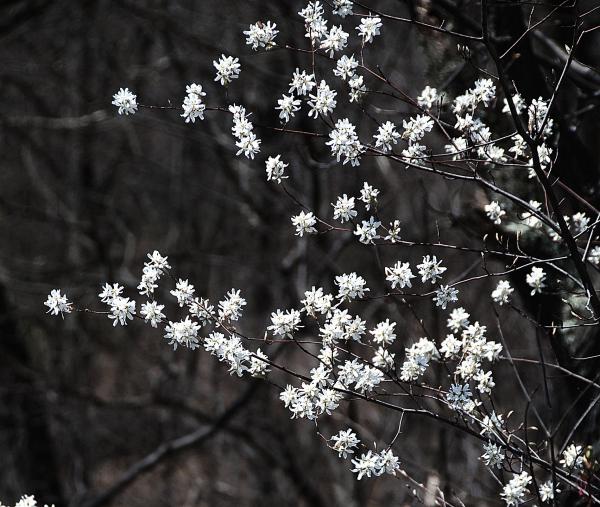Shadberry: A Delightful Local Edible
Title
Body
 One of the joys of hiking in Harriman State Park is the variety of edible fruits we may find there. Blueberries and wine berries are prevalent in the park and well known, but few people are familiar with the shadberry.
One of the joys of hiking in Harriman State Park is the variety of edible fruits we may find there. Blueberries and wine berries are prevalent in the park and well known, but few people are familiar with the shadberry.
The shadberry (Amelanchier arborea Nutt.) was a very important fruit to the early settlers and the Native Americans. The latter used it dried much as we use raisins and prunes and as an ingredient of pemmican. Pemmican is a mixture of dried meat (usually buffalo or deer) and fruit, corn, and/or nuts. Different fruits were used, but shadberries were preferred. The early colonists used shadberries in puddings, wines, pies, and as dried fruit.
The shadberry grows ubiquitously on the North American continent and is regionally known by many other names, including serviceberry, Juneberry, sugar plum, and grape pear.
The derivation of the common names is interesting. Shadberry or "shadbush" was coined because the species' flowering often coincides with the time of the upriver migration of the shad fish in the Hudson. Serviceberry is thought to refer to the fact that these trees are one of the first to bloom in the spring and the timing of the blooms coincided with burial services postponed until such time as the ground had thawed sufficiently for interment. Juneberry refers to the fact that in northern areas such as our own, these berries mature in June.
The best way to identify shadberry is to look for the trees in April, when they blossom with white, fragile, downy-like flowers (see photo). To enjoy the berries, note the location, then return between late June and early July. Further identifying features include smooth, light gray bark with a contrasting darker tiger-striped pattern. The trees are normally less than 12 feet in height, but larger specimens may be over 20 feet high and several feet in circumference.
The fruits are about the size of blueberries and become edible when red, but are best when they attain a purple coloration. The berries hang on individual stems, not in clusters like blueberries. They usually grow heaviest at the top of the plant, which places them out of easy reach. Picking them is a slow task. Their flavor is unlike that of any other wild or cultivated fruit and is commonly described as a combination of cherry and blueberry.
For those of you who have taken some chemistry, a publication on these fruits by this author discusses the aromatic chemicals present in the shadberry and responsible for its unique and desirable flavor. The primary chemical responsible for the aroma is benzaldehyde; other important contributors are phenylacetaldehyde, 2-hexenal and hexanal. (2)
My experience with shadberry trees in Harriman State Park is that they are scattered along the trails on the higher ridges where the soil is relatively thin. Particularly good places to find the trees include the Breakneck Mountain Trail, which runs parallel to and about 0.25-mile south of Breakneck Pond. Last year the berries also grew prolifically along the Dunning Trail near where the “bowling rocks” are located, which is about 1.5 miles southwest from the beginning of the Dunning Trail at the ASB Trail.
1. Smith, A. in Edible and Medicinal Plants of Hudson Valley and Highlands. M.S. Thesis, Columbia Pacific Univ., San Rafael, CA, 1991).
2. Parliment, T. and Smith, A. Volatile Components of Amelanchier arborea Nutt (Shadberry) Fruit.
Trail Conference member Thomas Parliment has a PhD in chemistry and was a research chemist for General Foods and Kraft Foods during his industrial career. He has studied the aroma composition of various foods and is a longtime leader for the Appalachian Mountain Club.
